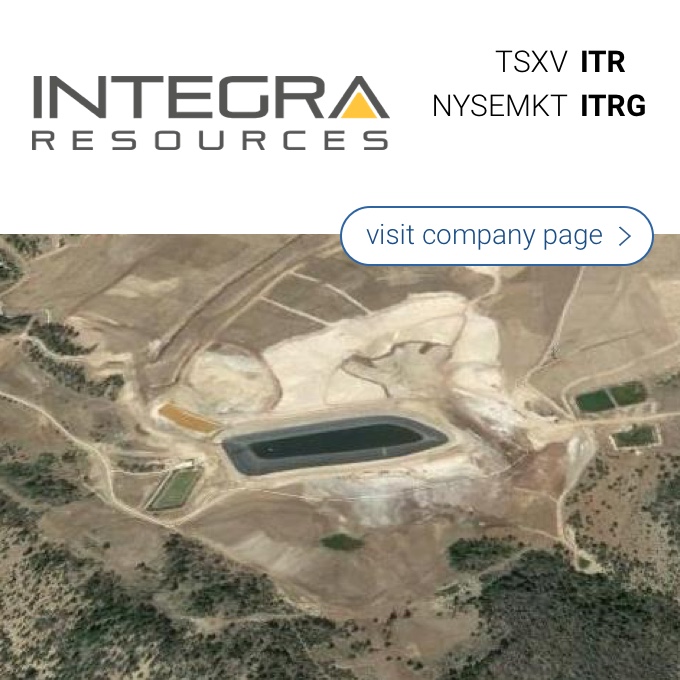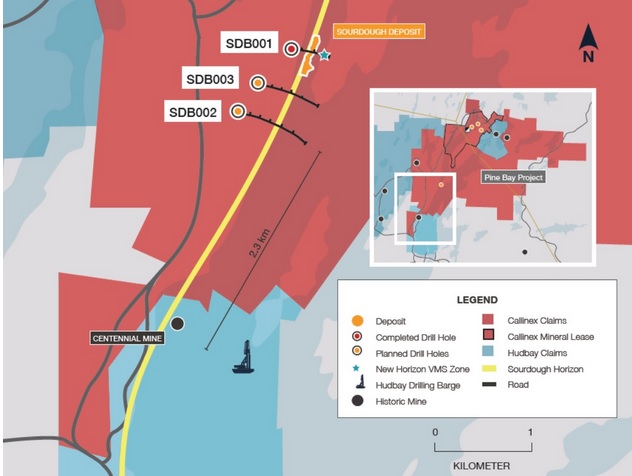Earlier this year we published a Q&A session with Ted O’Connor, CEO of Azincourt Uranium (AAZ.V). Now the final results of the Patterson Lake North exploration program have been published, we thought it was time for an update.
[download_link link=”http://caesarsreport.com/freereports/CaesarsReport_2014-04-25.pdf” variation=”blue”] DOWNLOAD REPORT [1.2MB][/download_link]
[gview file=”http://caesarsreport.com/freereports/CaesarsReport_2014-04-25.pdf”]
[download_link link=”http://caesarsreport.com/freereports/CaesarsReport_2014-04-25.pdf” variation=”blue”] DOWNLOAD REPORT [1.2MB][/download_link]
[fancy_header3]TEXT VERSION[/fancy_header3]
[margin20]
Introduction
Earlier this year we published a Q&A session with Ted O’Connor, CEO of Azincourt Uranium (AAZ.V). Now the final results of the Patterson Lake North exploration program have been published, we thought it was time for an update.
The Patterson Lake North Winter Program
Azincourt Uranium spent just under $1M on a diamond drill program in January/February which was aimed to follow up on some promising targets on the Central and Southern zones of the PLN Project. This drill program was part of a commitment to spend $1.5M in exploration expenditures before the end of the first year of the option agreement whereby Azincourt can earn a 50% ownership in the project.
O’Connor expected to drill approximately 3,000 meters earlier this year, but Azincourt has stopped drilling after completing almost 2,000 meters in seven diamond drill holes. Even though Drilling encountered the same lithology as at Fission Uranium’s PLS project, the market reacted very disappointed and sent the Azincourt share price 25% lower.
We asked CEO Ted O’Connor some questions about how to interpret the final results of the winter exploration program at Patterson Lake North.
[fancy_list style=”arrow_list”]
- As the share price dropped when you announced the PLN results, it looks like the market expected another discovery. Can you tell me how important it is to see the same lithological setting as at Fission?
[/fancy_list]
[fancy_list style=”bullet_list”]
- It is extremely Important that we saw the same type of graphitic rocks with similar structure and alteration to the PLS discovery on the A1 conductor system at PLN. Unconformity uranium exploration discovery is the result of a series of tests – geophysical target generation and drill holes necessary to vector into areas with better chances for success or move on. This season proved to us that the central conductors (A1 and A1B) have been upgraded and remain prospective.
PLN has multiple prospective conductor targets in three separate trends at PLN – covering the entire project area. All three trends have seen work this winter and will see additional targeting geophysics and drill testing this year.
[/fancy_list]
[fancy_list style=”arrow_list”]
- Can you elaborate a bit more on the radon survey? How does it work and were the results significant?
[/fancy_list]
[fancy_list style=”bullet_list”]
- Radon is a daughter product from the natural decay of uranium on its way to ending up as lead. Radon has a very short half-life of less than 4 days, and it is a gas. Therefore if radon is detected, it usually means a uranium source is in the vicinity, and it cannot be too far away. The source of the radon cannot be too deeply buried under solid rock unless faulting or major fracturing is present.
The surveys completed at PLN were mostly radon gas sampling of lake bottom sediments with some lake water samples as well. The survey is done on frozen lakes sampling through the ice when the lake water is not moving due to waves and weather effects. This provides the best quality data as far as results and repeatability. Samples are collected along a prospective trend – usually a conductor to establish if there are any high values. The radon survey is another targeting tool that is another layer of evidence to use to prioritize drill holes. Drilling is the most expensive tool in exploration and we are trying to explore smarter. It is all about drilling the best targets first.The two lakes we surveyed at PLN had highly anomalous radon results coincident with conductors. These have become the high priority drill targets for future testing.
[/fancy_list]
The Macusani project in Peru
We have always liked Azincourt mainly for its more advanced stage uranium project in Peru where the company has acquired a project with a resource estimate of 35.6 million pounds. As this project looked very similar to the uranium project owned by Macusani Yellowcake (YEL.V) next doors, the market was waiting for some kind of strategic move to consolidate the ownership of both assets. We originally thought Azincourt Uranium would probably acquire Macusani Yellowcake, but last Thursday, both companies announced Macusani Yellowcake is acquiring Azincourt’s Peruvian uranium project for a total consideration of 68.35 million shares which have a theoretic value of C$6.8M based on Macusani’s last closing price. This might sound cheap, but don’t forget Azincourt actually acquired the project for just C$2M, so it actually threefolded the value of Minergia.
A combination of both properties has a lot of merit, as Macusani Yellowcake thinks it can easily incorporate the additional pounds of uranium into an updated Preliminary Economic Assessment which should easily result in an after-tax Net Present Value of in excess of half a billion dollar. Another positive takeaway is that Ted O’Connor will become CEO of Macusani Yellowcake as well, so Azincourt-shareholders can be sure the company is being led by decent people.
Also keep in mind it will be easier to analyze Azincourt Uranium as well, as the value of the Peruvian asset will now be reflected in the Macusani Yellowcake share price. As Macusani will issue 68.35 million shares to Azincourt, every share of Azincourt will be backed by 1.36 shares of Macusani. At the current share price this means that for every Azincourt at C$0.18, $0.135 is being backed by its underlying investment in Macusani Yellowcake and the Saskatchewan project and its cash are currently valued at just C$0.045 which is less than C$2.5M.
Conclusion
We aren’t surprised that some kind of corporate initiative was taken to merge Macusani Yellowcake’s and Azincourt’s Peruvian uranium projects, but we didn’t expect this construction as an outcome. At first sight this deal seems to be advantageous for Azincourt shareholders as they will continue to benefit from advancing the Peruvian project through the equity stake in Macusani.
We’re also convinced this transaction creates a lot of synergy possibilities and we’re looking forward how Ted O’Connor can advance the Macusani uranium project from here on.
[divider_top]
Disclosure: Azincourt Uranium is a sponsoring company. We hold a long position. Please see our disclaimer for current positions.













